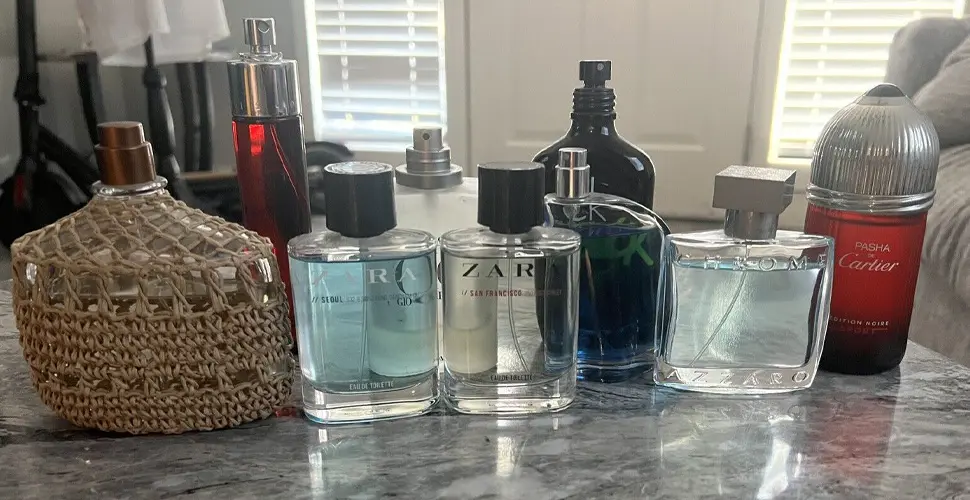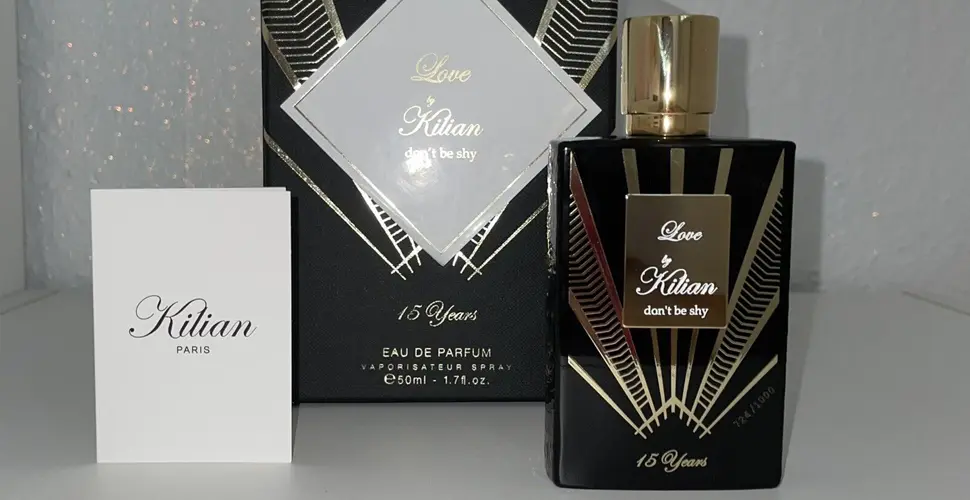The Science Behind Fragrance Ingredients: A Closer Look
Deana Stallings
- 04 Jan 2023

The Science Behind Fragrance Ingredients: A Closer Look
Introduction
The Science Behind Fragrance Ingredients: A Closer Look
Have you ever stopped to wonder what is really in that bottle of your favorite fragrance and how it works its magic? Beyond being simply enjoyable, or even pleasant, a perfume can actually be quite a complicated combination of science and art! One of the best quotes to encapsulate this paradox is by novelist Denyse Beaulieu, who said “The smell of a perfume is as powerful as a fingerprint – unique and even mysterious.”
Fragrance ingredients play an incredibly important role within a product. When experienced properly, a fragrance is the perfect marriage between scent, mood, emotion, and memory. Understanding the science of fragrance, however, requires some knowledge. In this blog post, we’ll provide an introduction to the basics of scent and provide a deeper dive into the science and ingredients of your favorite fragrance.
First, let’s discuss some of the basic terminology associated with fragrances. Fragrance is made up of three key parts: the base, the heart, and the top note. The base is the foundational layer, or the scent that lingers around the longest. It can consist of ingredients like benzoin, patchouli, or vanilla. The heart is the main body, providing the majority of the fragrance. This can include ingredients like Rose Geranium or Osmanthus. And lastly, the top note is the first impression, and what you experience upon first spray. This could be a blend of citrus or herbs like bergamot or lavender. These notes, when combined, make a scent that is unique and lasting.
“Fragrance ingredients play an incredibly important role in the development of a product, and understanding the science of scent requires some knowledge. This blog post provides an introduction to the basics of scent and a deeper dive into the ingredients of your favorite fragrance.”
Question: How is a fragrance created?
Answer: A fragrance is created with three main parts: the base, heart, and top note. The base provides the foundational layer, the heart is the main body, and the top note is the first impression. When these notes blend together, it creates a unique and lasting scent.
Fragrance ingredients and the science
Heard of the term “olfactory fatigue”? It’s a phenomenon that might explain why you can’t tell the difference between the smell of your favorite shampoo and the smell of your laundry detergent. It turns out there’s science behind different fragrances and how they interact with your senses. Let’s explore the ingredients that make up a pleasing smell and the science of how they create scents.
Fragrances come in three main categories: top, middle, and base notes. One of the most common ingredients in all scent profiles is essential oil. These oils are extracted from plants and are used to create the first layer of smell. The next layer would be aroma. A strong smell that is more intense than the essential oils. Finally, there are the so-called “fixatives” which are used to bind all the ingredients and extend the life of the scent.
Now that we know the components that make up a fragrance let’s explore the science behind it. All smells we perceive come in the form of invisible microscopic molecules called scent particles that get inhaled through our nostrils. For a scent to make its mark, it needs to reach the olfactory receptors in the nose.
These smell receptors, or olfactory nerves, act like a lock and key, where the scent particles fit the shape of the key exactly. The smell receptors in the nose then send signals to the brain, which is what creates a memory associated with the smell. Depending on how strong the scent particles are, they can stay airborne for much longer.
The science behind creating a pleasing smell is pretty complex. It takes precise formulation and well-trained noses to come up with a fragrant combination that is unique and complex. That’s why perfumers employ a technique called sniff strips. On each strip lies a unique combination of essential oils and aroma molecules that get evaluated separately. As soon as the perfumer is pleased with the combination, the scent is ready for its admirers.
The art of making a fragrance that’s pleasant to the nose is a process of trial and error. Fragrance makers have to be aware of the fact that too strong a scent won’t last long and too weak a scent won’t make its mark. This means that the perfect balance of ingredients has to be achieved to make a pleasing aroma.
At the end of the day, a scent is only as good or bad as it smells to you. Everyone’s nose is different, so what smells bad to some, may be a heavenly scent to others. We hope this provided a better understanding of the science of creating a fragrance. Let your nose guide you!
The Basics of Fragrance Science
Fragrances, a beguiling mix of aromas and resins, play an influential role in our lives on a daily basis. We can be instantly transported away to a tropical paradise on an island beach with a simple spritz of an exotic, fruity fragrance. Or a delicate rose perfume can take us straight back to a Victorian garden. Perfume has the power to stir the senses, to invoke powerful emotions and to reflect our personality. But have you ever stopped to think about just what goes into creating a fragrance?
The chemistry and biology of fragrance is truly remarkable. Our sense of smell is partly made up of hundreds of tiny scent receptors located in our nose and partly from the limbic system – a part of the brain which deals with emotion and memory. Together these receptors pick up on tiny molecules and particles released from fragrance compounds and these particles stimulate the brain, causing it to produce the recognize scents.
Fragrance compounds can be divided into two categories: those of natural origin (known as aromatics) and those of synthetic origin (known as synthetics). Natural aromatics come from plants and are created by steam-distilling or cold-pressing natural resins and oils, such as flowers, leaves, roots and fruits. These resins and oils contain its very own unique fragrance – that’s why different types of flowers have their own distinct smells. On the other hand synthetic compounds are man-made and can be used to mimic natural aromatics or to create brand new fragrances.
Natural components are often blended together to create complex, multi-layer scents within perfumes and colognes. The top notes are the initial scents we usually notice first and they usually tend to be the freshest and most vibrant. The middle notes act as a bridge from the top to the base and this is where complexity and depth of the scent starts to come together. Lastly, the base notes are the heavier ingredients with the richest aromas. These scents tend to linger on the skin for hours after application and can be seen as a way of ‘signing-off’ a fragrance.
Fragrances can be a powerful thing indeed, when all its components are used cleverly we can have a captivating blend of aromas. So the next time you spritz on your favourite scent, take a minute to breath it in and ponder upon the chemical and biological components which together complete its unique aromas. Who knows, you may even be inspired to create your own signature scent!
So, let these points swirl about your head like a bouquet of floral notes and make you feel blessed by the chemical biology of fragrance!
How Fragrance Ingredients are Extracted and Formulated
Nothing smells sweeter than the scent of a beautiful flower in bloom, but did you know that the fragrances of all your favorite flora can be extracted, isolated, and created into enchanting scents with a special process?
If you’ve ever wanted to know all about extracting fragrance ingredients from natural sources like flowers and plants, you’re in luck. Today we’ll be spinning a tale of isolated aroma ingredients, and ending with the formulation of all sorts of fragranced products, from perfume to lotion–all from the goodness of Mother Nature.
First up is the extraction process. There’s two methods to extract the aromatic ingredients from natural sources: physical extraction, like pressing of the petals, or using a solvent like alcohol to extract the oil (also referred to as enfleurage).
Once the precious aroma ingredients have been extracted, it’s time for a bit of molecular chemistry it’s time to isolate the individual fragrances and create a multitude of synthetic variations of the organic fragrance components. Through distillation, other methods too complicated to explain, and a bit of experimentation, a unique fragrance is created.
Once the fragrances and products are blended, it’s time to formulate. This is when the unique scent is blended with waxes, butters, and other lotion ingredients to create a beautiful home for your favorite aroma. When the fragrant elixir has been perfectly blended (like Goldilocks had to have her porridge, the concoction should be “just right”) the magical combination is ready to be put into its container and presented to the world.
So, if you ever wondered how perfume, lotions, and candles get their gorgeous scents, you know it’s a special process of extraction and isolation of aromatic ingredients, followed by careful formulation of the perfect scent. And who knows, you might even get inspired to start experimenting with your own customized fragrances!
The Science of Synthetic Fragrance Ingredients
The art of fragrance creation is a complex one, as products created must appeal to many people’s senses and evoke desired memories. High-quality fragrances, massage oils, and other products are often created using a mix of synthetic and natural ingredients. Some may be wondering what the differences are between synthetic and natural ingredients, and the advantages and disadvantages associated with using either. Let’s take a look.
Synthetic fragrance ingredients
Synthetic fragrance ingredients are created in laboratories and not found in nature. While these ingredients can contain natural chemicals and naturally-derived products, they are not obtained through traditional extraction, refinement, or fermentation of a natural original source material. Synthetic ingredients are typically more cost-effective and easier to produce, and consequently, more widely used in perfumes and fragrances.
Natural fragrance ingredients
Natural ingredients, on the other hand, are obtained from plants and animals, and are typically obtained through traditional extraction, refinement and fermentation of a natural original source material. Plants, woods, resins, and animal products are common natural sources. Natural ingredients are often more expensive and more difficult to source, as they are not always readily available.
Advantages and disadvantages of synthetic ingredients
Using synthetic ingredients to create fragrances has a few pros and cons associated with it.
• Advantages: Synthetic ingredients are easier to procure and are cost-effective, so the price of fragrances created with them tend to be lower than those created with natural ingredients. Fragrance makers can also control the quality and fragrance of synthetic ingredients, making them easier to work with and having more predictable outcomes.
• Disadvantages: Synthetic ingredients are typically less long-lasting and often have “cringe-worthy” or chemical-like scents.
Advantages and disadvantages of natural ingredients
Using natural ingredients to create fragrances also has a few pros and cons.
• Advantages: Natural ingredients tend to last longer than synthetic ingredients, and their scents often evoke good memories. Natural ingredients can also create a more complex fragrance, as natural fragrances often contain hundreds of different scent molecules.
• Disadvantages: Natural ingredients can be difficult to source, and the cost of these ingredients can be high. Additionally, natural ingredients tend to be less stable, so fragrances created with natural ingredients may be more prone to fading over time.
While the advantages and disadvantages of synthetic and natural ingredients will be up to each individual to decide, using both can mean that quality fragrances can come to life. Whether it’s the stability of the synthetic ingredients, or the complexity of the natural ingredients, combining the two can create fragrances that will delight even the most discerning noses.
Safety and Regulations
Are you concerned about the safety of fragrance ingredients? You’re not alone! With growing public awareness of what ingredients are in the products we use everyday, safety concerns over fragrances have become increasingly prevalent. There are myriad fragrance ingredients available on the market, and understanding how fragrances are regulated by government agencies is essential for consumer safety.
First, it’s important to understand the composition of fragrances. Fragrance ingredients typically include essential oils and aroma chemicals that, when combined, create a unique scent or flavor. These ingredients vary widely in how they behave and how much of them are used in any particular product. Fragrances can also contain potential irritants or allergens, so it is important to be aware of what is in a product prior to purchase, especially if you have sensitive skin.
Fortunately, fragrance ingredients are heavily regulated by government agencies such as the Food and Drug Administration (FDA) and the Environmental Protection Agency (EPA). The FDA requires all fragrance ingredients to be safety tested and approved before they can be used in any consumer product. Additionally, the EPA has established limits on certain volatile organic compounds (VOCs) - compounds released into the air that are known to have adverse effects on human health.
Finally, it’s important to recognize that not all fragrances are created equal. Depending on the ingredients and the concentration of those ingredients, some fragrances can be more irritating or allergenic than others. That’s why it is so important to read product labels and research fragrances prior to purchase. It’s up to us, the consumer, to keep ourselves informed and make the best choices in terms of the products and fragrances we use.
So, the next time you’re at the store looking for a new fragrance, take the time to familiarize yourself with the ingredients in the product, and their relative safety. Don’t forget to have fun - and keep in mind that fragrances can be a great way to add some flare and personality to your day!
Conclusion
In conclusion, when selecting a scent, it is important to have a greater understanding of the science behind the ingredients and understand the effects different fragrance ingredients can have on the body. Through a better understanding of the fragrance ingredients, consumers can make an informed decision on the type of fragrance they choose.
When selecting a scent, it is also important to consider the quality of the ingredients and the packaging, to ensure that the product is safe and that it is of a high quality. Additionally, it is essential to pay attention to the expiry date to ensure maximum effectiveness and longevity of the product.
Remember that experimenting with different scents can be a fun and even therapeutic experience as smells can trigger different emotions and memories. As such, we encourage you to explore, experiment and enjoy the experience of testing out different fragrances to discover your individual scent and the scents that make you feel your best.
So, what are you waiting for? Treat yourself to a wonderful scent-filled experience and don’t forget to get creative and truly explore and capture the unique experience of discovering the perfect scent.


